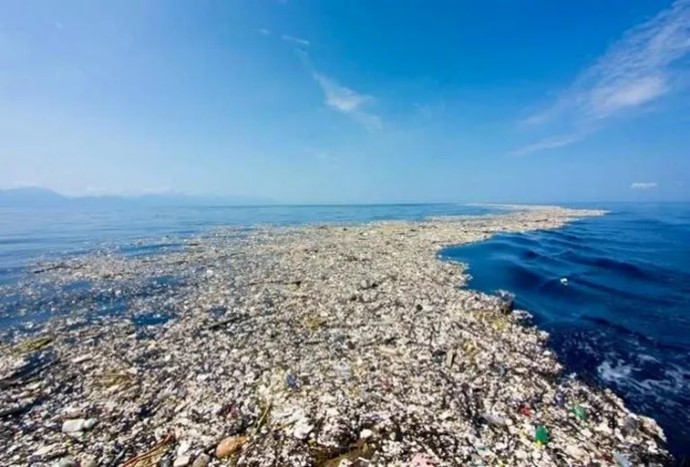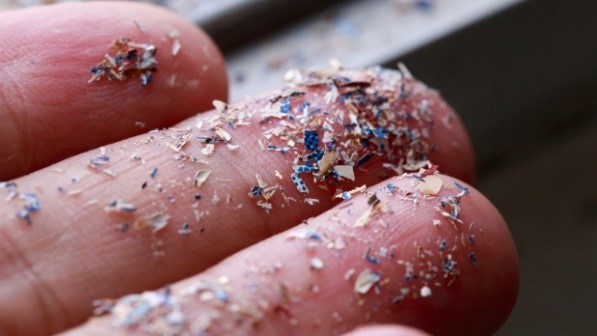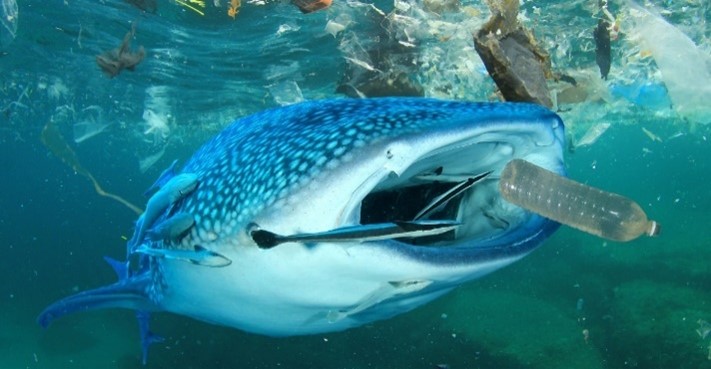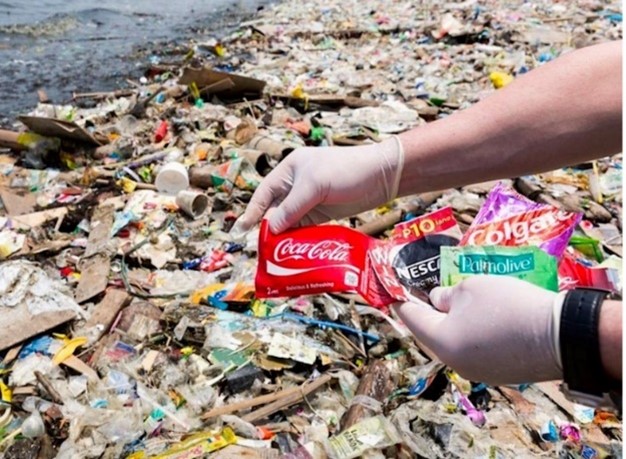Plastic Pollution Crisis
By Marleen Reddaway, VP of Environmental Engineering (Tulsa, Oklahoma)
Ms. Reddaway has earned a Bachelor of Science degree in Electrical Engineering and a Master of Business Administration from Oklahoma State University, and then through specialized training, holds the designation of Qualified Industrial Stormwater Practitioner (QISP). With over 20 years of experience in the environmental, health, and safety industry, she is passionate about pollution prevention, protecting wildlife, and investigating occupational exposures to workers.
 Figure 1 Source: AFP Photo/Handout
Figure 1 Source: AFP Photo/Handout
It’s durable, affordable, versatile, and the world loves it. I am talking about plastic, but our planet has too much of a good thing now. Plastic waste does not readily decompose and can persist in the environment for centuries, never fully disappearing. Through mass production and improper disposal of plastic products, the world’s water sources are facing a significant crisis, requiring urgent action. This plastic pollution crisis is evident from the several ocean garbage patches located across the globe. High concentrations of floating plastic and other debris get trapped in swirling vortexes called gyres. Of the several plastic accumulation zones across the earth’s oceans, the floating patch in the North Pacific Ocean is the largest, commonly known as The Great Pacific Garbage Patch.1 This trash vortex spans waters from the West Coast of North America to Japan.2
 Figure 2 Source: Adobe/Adobe Stock
Figure 2 Source: Adobe/Adobe Stock
As this plastic waste begins to break down, microplastic and nanoplastic particles are generated, creating a toxic soup that gets extensively dispersed via the ocean currents and wind patterns.1 This makes plastic easier to infiltrate the human body through ingestion, inhalation, and absorption. The ingredients of this toxic plastic soup can include chemicals such as Bisphenol A (BPA), Di(2-ethylhexyl) phthalate (DEHP), and Polybrominated diphenyl ethers (PBDEs).3 The chemicals used in plastics can build up in the food chain and affect wildlife and human health. The primary concern for humans is the chemicals are known to cause cancer, disrupt hormones, and suppress the immune system.4
 Figure 3 Source: Rich Carey/Shutterstock
Figure 3 Source: Rich Carey/Shutterstock
The threats to marine life from plastic in the ocean are entanglement and ingestion, and through altering their habitat by impacting the behavior and diversity of the species. Entanglement can cause the animals to lose mobility and drown, prevent them being able to catch food or avoid predators, and the plastic can cause wounds from friction and cutting actions of the attached debris. Animals will consume plastic because the debris mimics their prey. Ingesting the plastic materials will block digestive tracts, damage stomach linings, and release toxic chemicals into their system. Plastic exposures can disrupt hormone regulation that will affect their reproductive health, ultimately threatening marine biodiversity.4
 Figure 4 Source: Greenpeace Canada
Figure 4 Source: Greenpeace Canada
To have effective solutions for this crisis, we need to start at the source. It has been found that 80% of marine litter comes from land-based sources, and that approximately 85% of that is plastic.5 The majority of this waste is comprised of plastic packaging and small plastic items. The other 20% is attributed to overboard discharges from ships and discarded fishing gear.6 The worst offenders are companies that produce tremendous volumes of plastic. According to Forbes, the world’s worst industries for plastic waste pollution are those that produce substantial amounts of plastic packaging, such as beverage and consumer good companies. An international research team did a study by collecting data over a five-year period (2018-2022) from 84 countries. This study found that 56 companies are responsible for 50% of the world’s plastic waste pollution. With the help of over 100,000 volunteers across six continents, the most identifiable plastic litter based on brands came from Coca-Cola, PepsiCo, Nestlé, Danone, and Altria, making up 24% of the waste.7 Altria realizes cigarette butts, which are made of 98% non-biodegradable plastic, are one of the most littered items in the world. Businesses overall are recognizing their responsibility for this crisis and striving to make changes for improvement through designing more sustainable packaging, reducing unnecessary single-use plastics, providing more resources to encourage recycling, , and supporting the development of a legally binding UN treaty to end plastic pollution.
References
- “The Great Pacific Garbage Patch”. The Ocean Cleanup. https://theoceancleanup.com/great-pacific-garbage-patch/.
- NOAA. What is the Great Pacific Garbage Patch? National Ocean Service website, https://oceanservice.noaa.gov/facts/garbagepatch.html, 6/16/24.
- University of Massachusetts Amherst. (2024, December, 16). Health and economic costs from three toxic chemicals used in plastics estimated at $1.5 trillion for a single year. Medical Express. Health and economic costs from three toxic chemicals used in plastics estimated at $1.5 trillion for a single year.
- International Union for Conservation of Nature (IUCN). (2024, May). Plastic Pollution. IUCN. https://iucn.org/resources/issues-brief/plastic-pollution.
- European Environment Agency (EEA). (2024, January, 25). From source to sea – The untold story of marine litter. European Union. https://www.eea.europa.eu/publications/european-marine-litter-assessment.
- “The Problem of Marine Plastic Pollution”. Clean Water Action. https://cleanwater.org/problem-marine-plastic-pollution.
- Cowger, W. Willis, K.A., Bullock, S., Conlon, K., Emmanuel, J., Erdle, L., Eriksen, M., Farrelly, T.A., Hardesty, B.D., Kerge, K., Li, N., Li, Y., Liebman, A., Tangri, N., Thiel, M., Villarrubia-Gómez, P., Walker, & T.R., Wang, M. (2024, April, 24). Global producer responsibility for plastic pollution. Science Advances, 10(17). https://www.science.org/doi/10.1126/sciadv.adj8275.